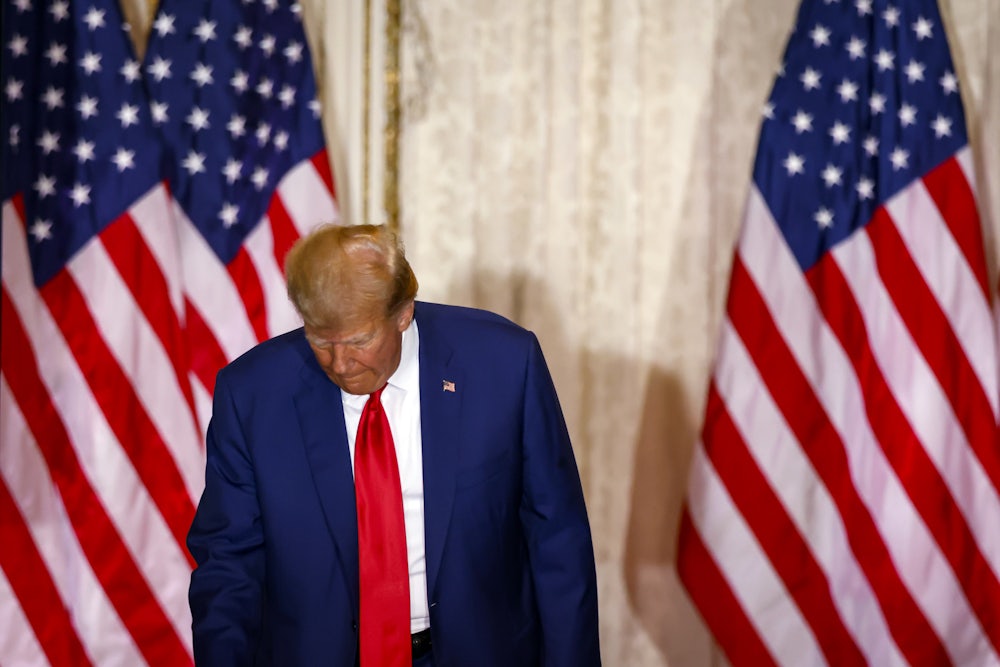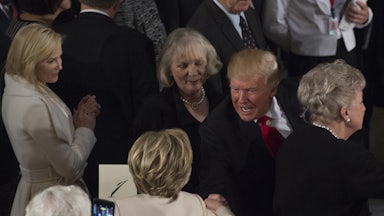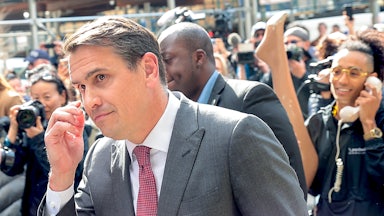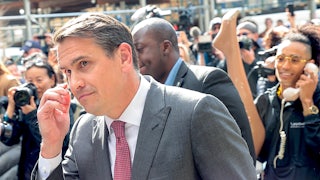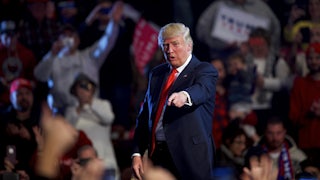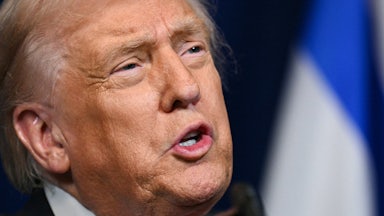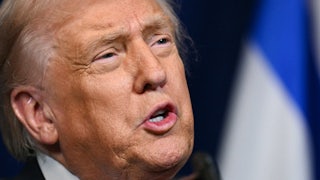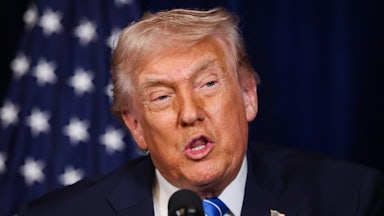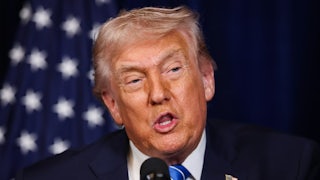Former President Donald Trump was stunningly reckless with the classified documents he unlawfully kept after leaving office, the Justice Department alleged in an indictment that was unsealed on Friday. The 49-page court filing depicts a former president who illicitly kept troves of the nation’s most guarded secrets, took almost no steps to safeguard them, occasionally showed them to random people, and lied to the government about returning them.
“The classified documents Trump stored in his boxes included information regarding defense and weapons capabilities of both the United States and foreign countries; United States nuclear programs; potential vulnerabilities of the United States and its allies to military attack; and plans for possible retaliation in response to a foreign attack,” the indictment said.
Trump faces a total of 37 separate counts from the indictment. Thirty-one of the charges are for willful retention of national defense information, all tied to his possession of individual documents about U.S. and foreign military capabilities. Any “unauthorized disclosure” of the documents, prosecutors said, “could put at risk the national security of the United States,” undermine American foreign relations, risk the safety of U.S. military personnel, and compromise U.S. intelligence assets and collection methods.
The other six charges involve Trump’s efforts to keep the documents even after the federal government sought to reclaim them. They include one count of withholding a document or record, one count of corruptly concealing a document or record, one count of concealing a document in a federal investigation, one count of scheme to conceal, one count of conspiracy to obstruct justice, and one count of making a false statement. Federal prosecutors also charged Walt Nauta, a top Trump aide, on each of those counts for his alleged role in the scheme.
Some of what’s described in the indictment is a virtual nightmare scenario for U.S. national security officials. For roughly three months after leaving office, for example, Trump kept more than a dozen storage boxes that included classified documents on the stage of one of Mar-a-Lago’s ballrooms, where, prosecutors said, “events and gatherings” took place. Over the following year, Trump employees moved the boxes to various unsecured locations inside the Florida resort.
The indictment details one incident where Nauta discovered that boxes had fallen over, emptying their contents onto the floor. He took pictures of the spill and texted them to another Trump employee to complain about the discovery. One of the documents, prosecutors said, has a visible classification marker instructing readers not to disclose it beyond the U.S. intelligence community and its four closest foreign allies: Australia, Canada, New Zealand, and the United Kingdom.
In at least two instances, prosecutors said, Trump showed the materials in his possession to people not cleared to view them. In July 2021, he showed a writer, a publisher, and two of his own employees a classified military plan to attack an unspecified foreign country. Trump encouraged them to read it because, in his eyes, it disproved a public claim made by an unspecified military official about him.
“See, as president, I could have declassified it,” Trump allegedly remarked, to laughter from those present. “Now I can’t, you know, but this is still a secret.” His admission that the documents were still classified severely undermines his claims that he had declassified everything he took before leaving office, which was a cornerstone of the defenses he and his allies have made since last year’s Mar-a-Lago raid.
A few months later, according to prosecutors, Trump again revealed classified materials to an employee of his political action committee. “During the meeting, Trump commented that an ongoing military operation in [an unspecified country] was not going well,” the indictment claimed. “Trump showed the PAC Representative a classified map of [the country] and told [him] that he should not be showing the map to [him] and to not to get too close.” That incident bolsters prosecutors’ claims that Trump knew he should not possess the material or show it to others.
Prosecutors also relied on notes by one of Trump’s lawyers to show that he intentionally sought to conceal the boxes of documents from a grand jury after it subpoenaed him in May 2022. The lawyer’s notes paraphrase Trump as saying, among other things, “Wouldn’t it be better if we just told them we don’t have anything here?” and “Well, look, isn’t it better if there are no documents here?” He also suggested that they not respond at all to the subpoena and “don’t play ball with them.” Prosecutors also detailed Trump and Nauta’s efforts to hide some of the boxes they had kept from the lawyer, who then falsely certified to the grand jury that they had all been returned.
Even beyond this case, Trump’s legal troubles are far from over. Manhattan’s district attorney charged him in April with state-level charges for his hush-money payments to Stormy Daniels during the 2016 election. Local prosecutors in Georgia are looking into whether he broke the law by pressuring state officials to miscount votes during the 2020 election. And special counsel Jack Smith, whose office oversaw the Mar-a-Lago investigation, is still probing Trump’s role in the January 6 attack on the Capitol in 2021.
Trump developed a reputation for evading accountability for his actions over the years. Friday’s indictment will test that ability to its limits.
